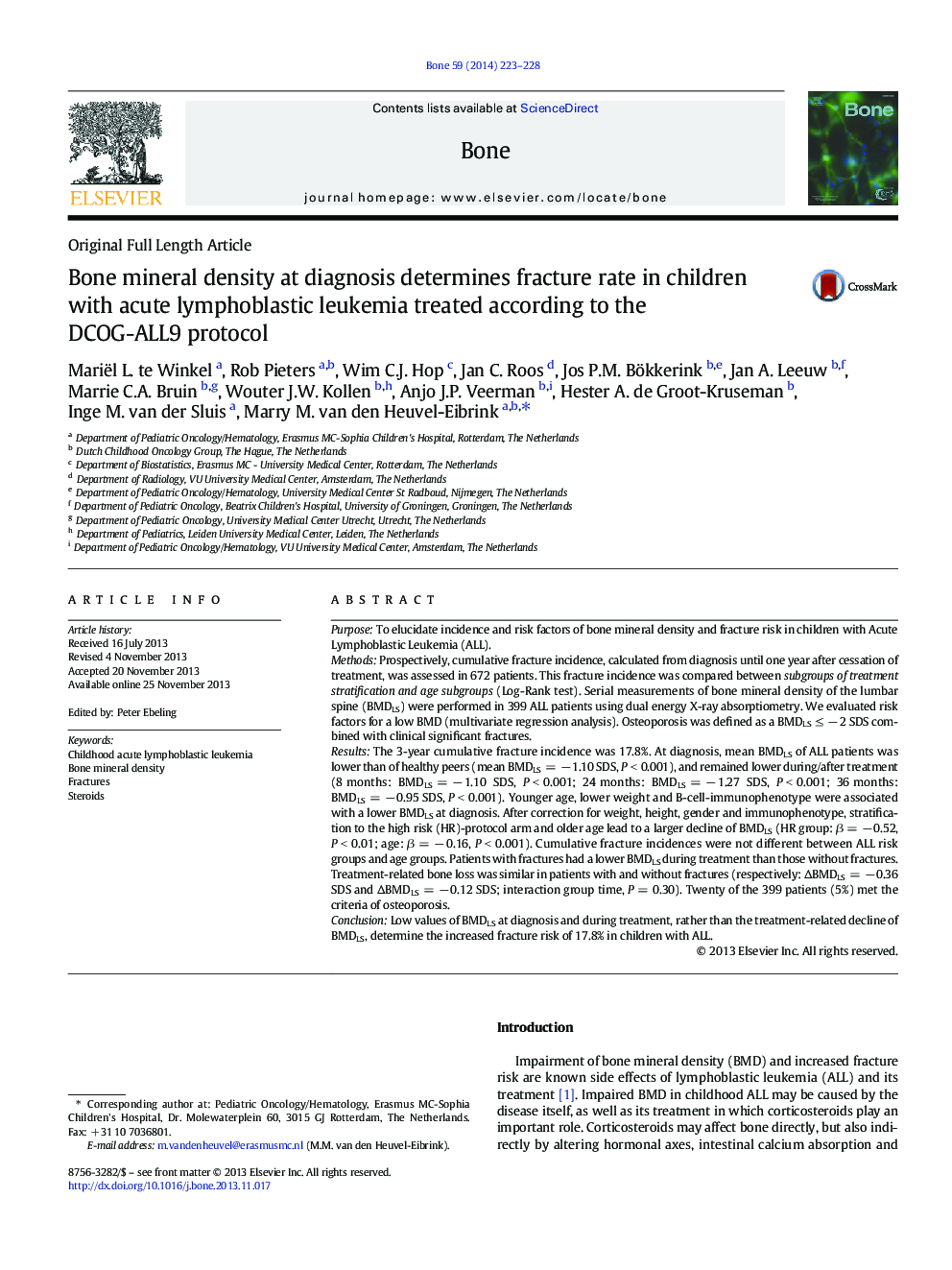| کد مقاله | کد نشریه | سال انتشار | مقاله انگلیسی | نسخه تمام متن |
|---|---|---|---|---|
| 5890546 | 1568160 | 2014 | 6 صفحه PDF | دانلود رایگان |

- The 3-year cumulative fracture incidence of fractures in pediatric ALL patients was 17.8%.
- At diagnosis, mean BMDLS of ALL patients was lower than of healthy peers and it remained lower during/after treatment.
- Younger age, lower weight and B-cell-immunophenotype were associated with a lower BMDLS at diagnosis.
- Low values of BMDLS at diagnosis rather than the treatment-related decline of BMDLS, determine fracture risk in children with ALL.
PurposeTo elucidate incidence and risk factors of bone mineral density and fracture risk in children with Acute Lymphoblastic Leukemia (ALL).MethodsProspectively, cumulative fracture incidence, calculated from diagnosis until one year after cessation of treatment, was assessed in 672 patients. This fracture incidence was compared between subgroups of treatment stratification and age subgroups (Log-Rank test). Serial measurements of bone mineral density of the lumbar spine (BMDLS) were performed in 399 ALL patients using dual energy X-ray absorptiometry. We evaluated risk factors for a low BMD (multivariate regression analysis). Osteoporosis was defined as a BMDLS â¤Â â 2 SDS combined with clinical significant fractures.ResultsThe 3-year cumulative fracture incidence was 17.8%. At diagnosis, mean BMDLS of ALL patients was lower than of healthy peers (mean BMDLS = â 1.10 SDS, P < 0.001), and remained lower during/after treatment (8 months: BMDLS = â 1.10 SDS, P < 0.001; 24 months: BMDLS = â 1.27 SDS, P < 0.001; 36 months: BMDLS = â 0.95 SDS, P < 0.001). Younger age, lower weight and B-cell-immunophenotype were associated with a lower BMDLS at diagnosis. After correction for weight, height, gender and immunophenotype, stratification to the high risk (HR)-protocol arm and older age lead to a larger decline of BMDLS (HR group: β = â 0.52, P < 0.01; age: β = â 0.16, P < 0.001). Cumulative fracture incidences were not different between ALL risk groups and age groups. Patients with fractures had a lower BMDLS during treatment than those without fractures. Treatment-related bone loss was similar in patients with and without fractures (respectively: ÎBMDLS = â 0.36 SDS and ÎBMDLS = â 0.12 SDS; interaction group time, P = 0.30). Twenty of the 399 patients (5%) met the criteria of osteoporosis.ConclusionLow values of BMDLS at diagnosis and during treatment, rather than the treatment-related decline of BMDLS, determine the increased fracture risk of 17.8% in children with ALL.
Journal: Bone - Volume 59, February 2014, Pages 223-228